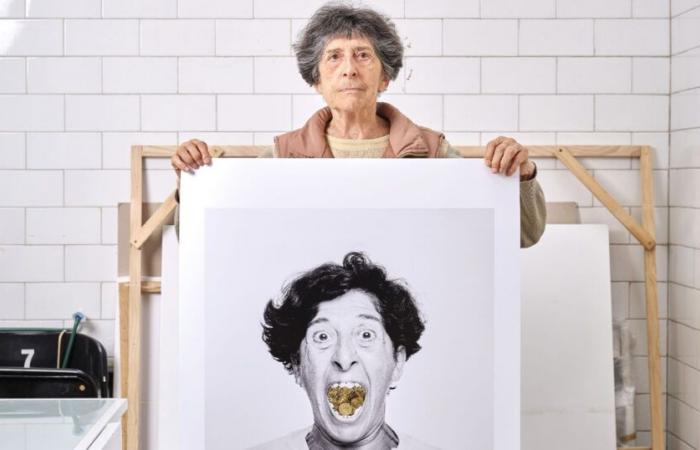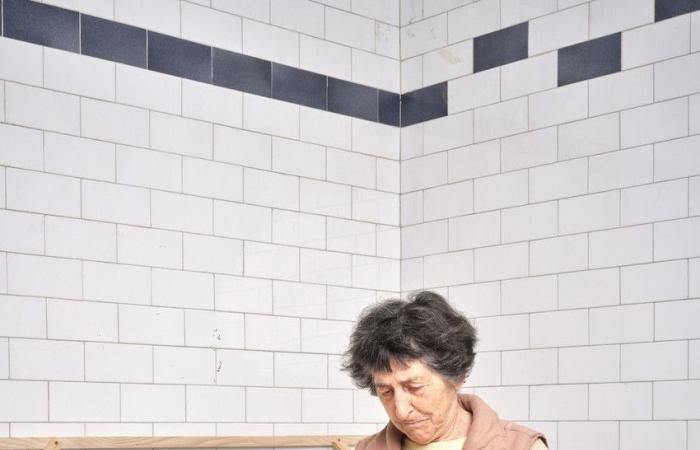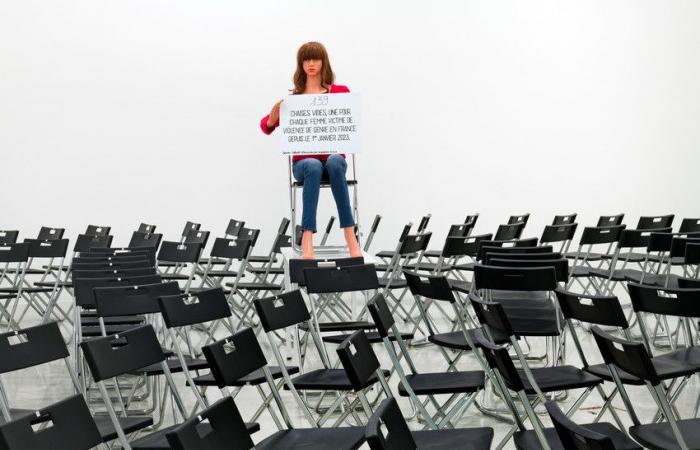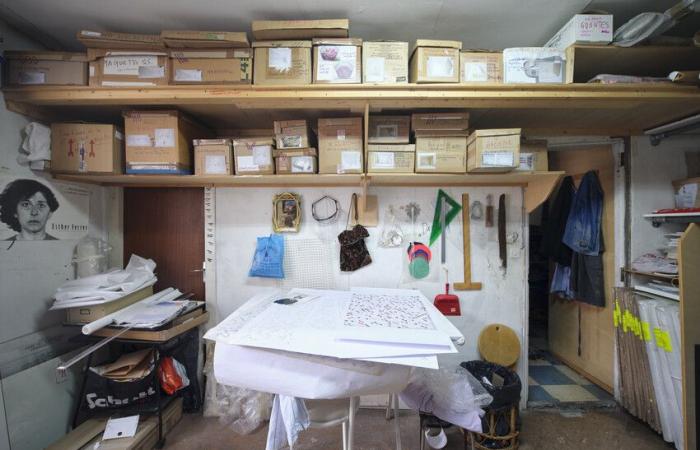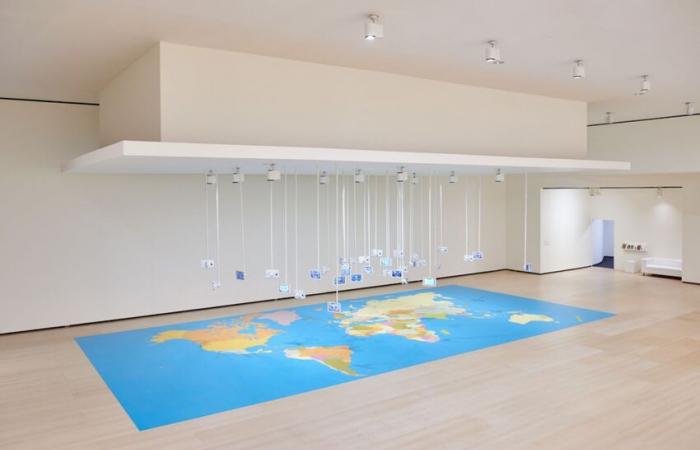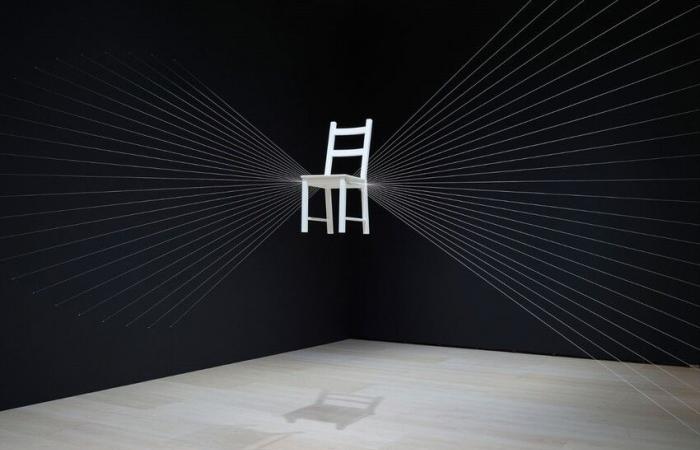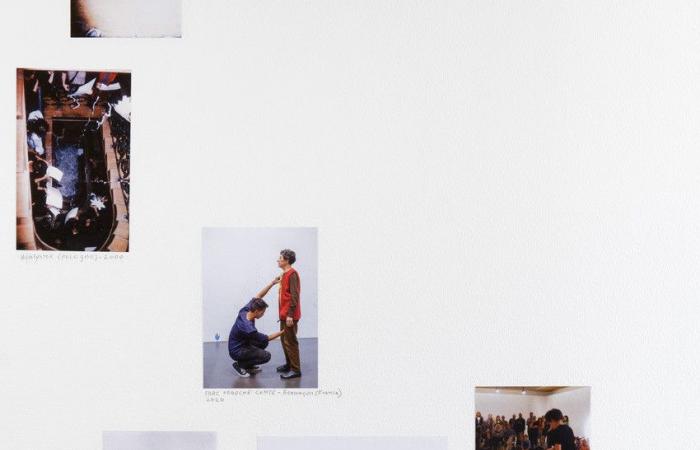Separating the work from the artist is not an option: his approach closely combines art and life. His daily life, his immediate environment, his moods nourish his work which, since the end of the 1970s, has been a vast collection of happenings, declarations, installations, photographic montages and paintings with geometric figures organized according to sequences prime number logic. So, what should you expect when planning a visit to Esther Ferrer? Well, to find a place reflecting the Parisian bohemianism of the 1980s and 1990s.
Fifty years of career
Nestled at the bottom of a paved courtyard in the 11th arrondissement, the large ground floor loft where she has lived since 1986 with her husband Tom Johnson, American contemporary music composer and friend of Keith Jarrett, harkens back to the time when Ile-de-France artists took over the old warehouses and factories of the then cheap Bastille district. But Esther Ferrer is not the type to cultivate nostalgia. At 86, the one who still carries out actions in situ “à poel”, as she says with a strong Spanish accent and a knowing smile, exudes extraordinary energy and enthusiasm after a fifty-year career and multiple exhibitions around the world, including a monograph at the Guggenheim Bilbao in 2018.
Esther Ferrer reveals her latest works on prime numbers that she creates using a carefully prepared grid of nails. © Connaissance des Arts / Manolo Mylonas
His work retains its freshness intact. As proof, the presentation currently dedicated to it by the Frac Franche-Comté in Besançon, bringing together some of its installations with performances by the dancer La Ribot. Its spring? A well-established creative process: “It always starts with an idea that comes to me either while walking or while performing simple everyday gestures. I write it down then I draw the device if it is a performance, and I’ll make a model if it’s an installation. »
Measure the passage of time
She says she has been fascinated by scale models since childhood, in memory of her father who took her, with her twin sister, to see theater models at the museum in San Sebastian, her hometown. Since then, she has paid particular attention to those of great architects. The way in which the body inhabits or crosses a space remains, for her, an almost existential question. She also likes to consciously measure the passage of time, and for years has been creating before/after photographs from self-portraits taken every five years, showing unvarnished the effect of aging.
![<i>Intimo and personal</i>[Intime et personnel]1977, photograph taken from one of his first performances. Courtesy Esther Ferrer.” width=”653″ class=”wp-image-195749 size-medium” height=”1142″/></p> <p id=](https://euro.dayfr.com/content/uploads/2024/10/19/3944ec0600.jpg) Intimate and personal [Intime et personnel]1977, photograph taken from one of his first performances. Courtesy Esther Ferrer.
Intimate and personal [Intime et personnel]1977, photograph taken from one of his first performances. Courtesy Esther Ferrer.She also imagines ultra-simple actions, with or without objects, mobilizing the patience of the audience. Parts that can be reactivated at any time. For example, she appears naked in front of the public and slowly takes all the measurements of her body, even the most absurd ones, or gives a lecture without stopping running or speaking. In the street, in Madrid, in 2004, sitting on a chair, she asks spectators to do the same, in order to form a continuous line and imitate everything she does for 24 hours: walk, sit , eat, leave, take bathroom breaks, etc. An early feminist, she says: “At Mac Val, in 2014, I created a huge installation presenting 115 chairs: I had read in the newspapers that 115 women had died as a result of being beaten by a man”.
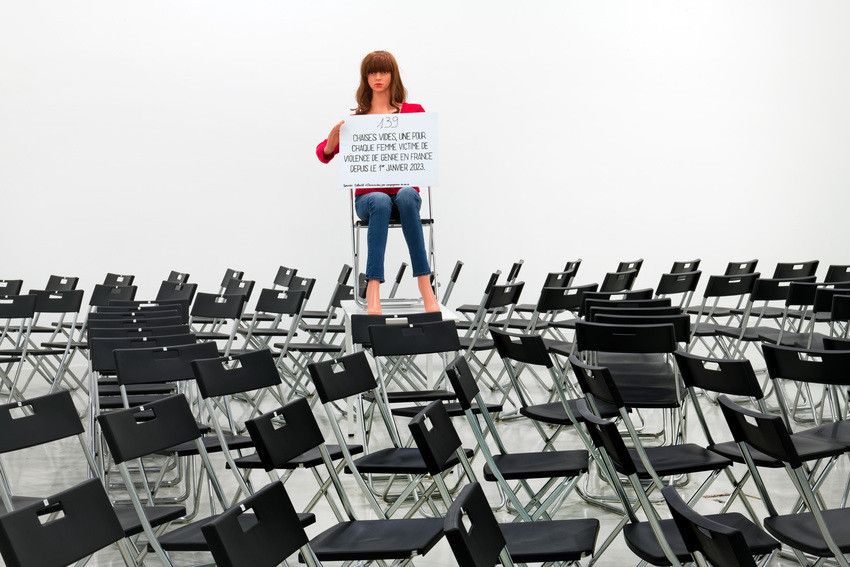
Each empty chair in this installation, currently visible in Besançon, represents a victim of sexist crime. ©Blaise Adilon.
A work without watertight borders
Having grown up in Spain under the Franco dictatorship, she cultivated a radical political ethic, in the situationist sense of the term. She says: “I am a “situactionist”! » Becoming a visual artist by chance, she creates her own rules. A literature and journalism student in Madrid, in 1967 she joined the avant-garde group “Zaj” (disbanded in 1996), made up of musicians and poets fond of happenings and influenced by John Cage, before settling down -even definitively in Paris in 1973 and to develop a multiform, moving work there, without watertight borders, in the image of his place of residence and production. Also, the central room which serves as both kitchen and living room opens widely onto its small glass-roofed workshop, entirely tiled, where Olivier, his faithful assistant, is busy. “We complement each other perfectly, she said. He likes to do what I hate: he refines and puts things in order. »
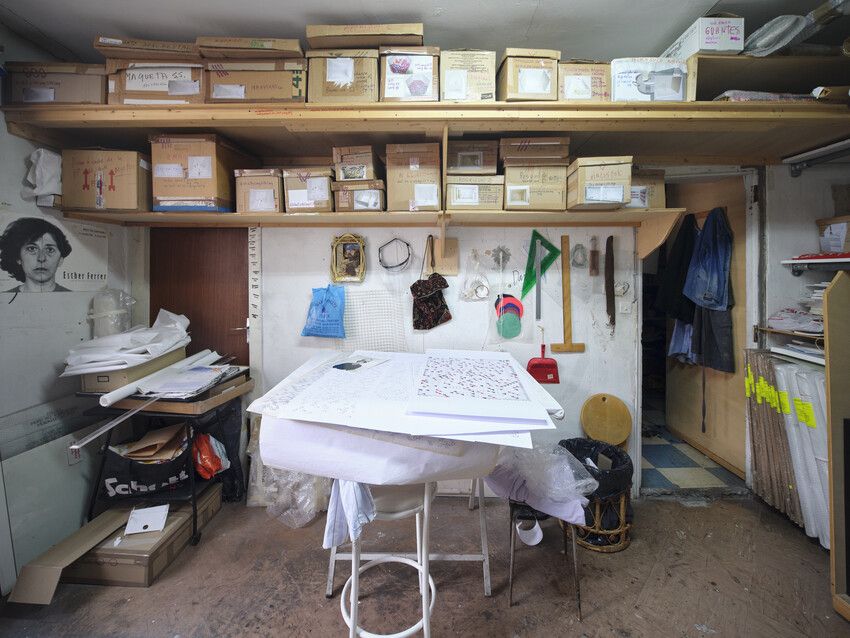
Upstairs, the artist archives all his models, photographs and digital documents, carefully classified and stored in custom-made boxes. Esther Ferrer’s workshop in Paris on June 14, 2024 © Connaissance des Arts / Manolo Mylonas
And there is plenty to do! On the first floor is a second workshop, a two-room apartment of approximately 35 m2, which is also an archiving space. Because everything fits in a set of folders and boxes, small or large, carefully labeled and arranged, even piled up, on shelves. They contain CD-ROMs of sound recordings, models or old 1-inch video tapes from the glorious days of Sony’s Portapack, which only a German laboratory can digitize today. We also find catalogs of her exhibitions, magazines with interviews with her, critical reports of her exhibitions, photos of her actions, posters, etc.
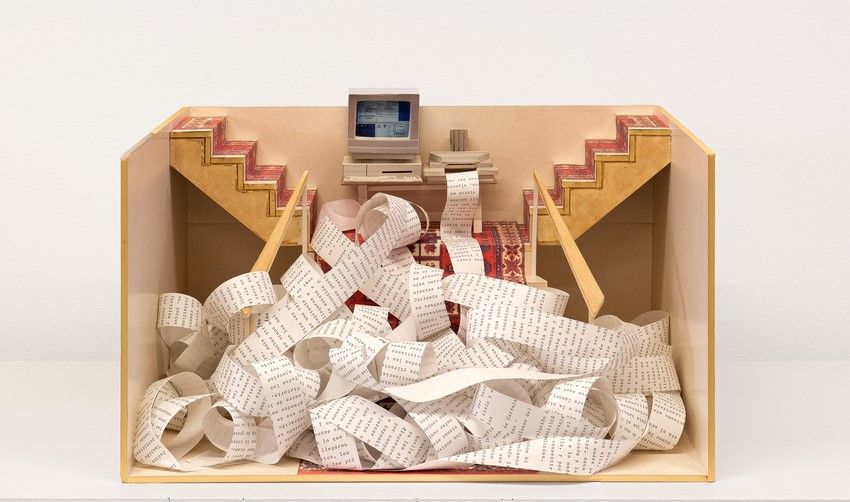
The Invasion1992, model, approx. H. 30 cm. Courtesy Esther Ferrer. ©Blaise Adilon.
Valuable documentation: “As I never prepare an exhibition, she explains, it is the commissioners or curators who choose what they want to show. Here they find the necessary elements to put together their events. My performances and installations are like musical scores subject to reinterpretations and variations. It depends on the place that receives them, and my desires”.
Three key works
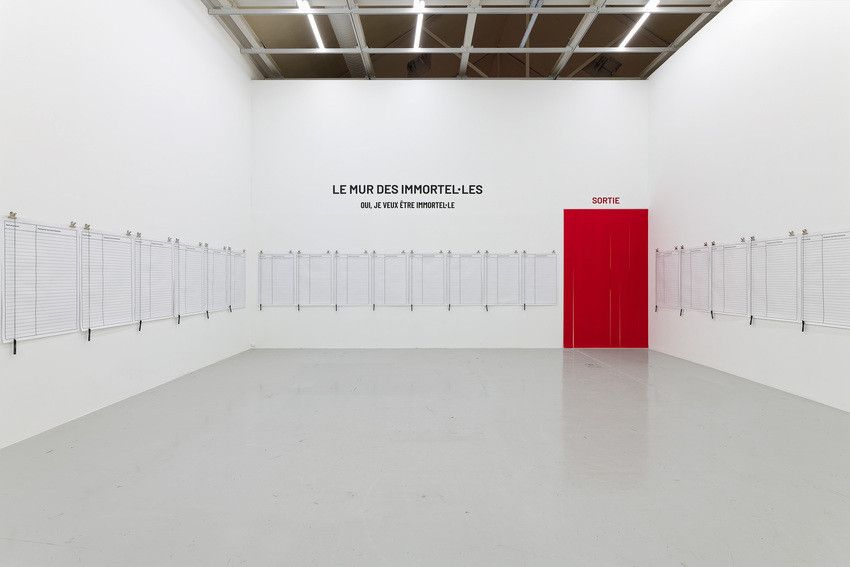 The Wall of the Immortals1987-2024, installation, view of the exhibition at Frac Franche-Comté, 2024 ©Blaise Adilon.
The Wall of the Immortals1987-2024, installation, view of the exhibition at Frac Franche-Comté, 2024 ©Blaise Adilon.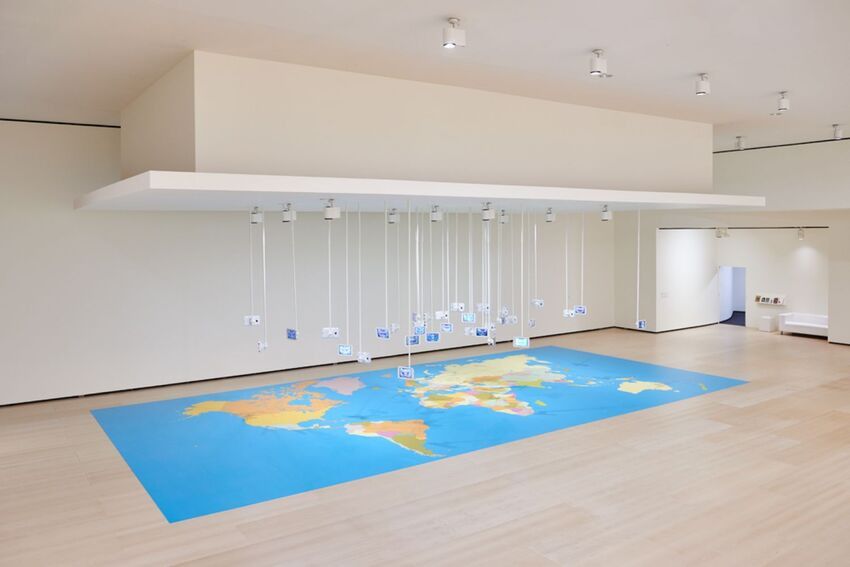 The Laughter of the World1999-2018, installation, exhibition view at the Guggenheim Bilbao, 2018 ©Erika Ede
The Laughter of the World1999-2018, installation, exhibition view at the Guggenheim Bilbao, 2018 ©Erika Ede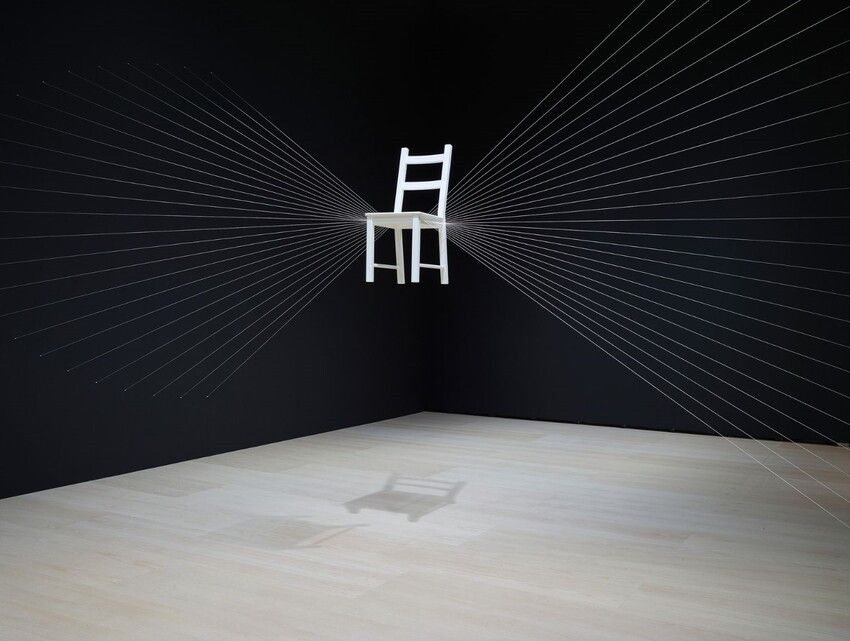 Hanging chair2000-2018, installation, exhibition view at the Guggenheim Bilbao, 2018. ©Erika Ede
Hanging chair2000-2018, installation, exhibition view at the Guggenheim Bilbao, 2018. ©Erika EdeAlone in her bubble
Here it is “bulls” she said. “When I’m not traveling, I spend my days in the workshop. In the chaotic world we live in, it’s the only thing that balances me! » On one side a desk with a computer, on the other a high drawing table with various tools hanging on the wall. Surprise: the one who readily welcomes the unexpected and « accidents » in her performances can sit for hours reproducing sequences of prime numbers with a copyist’s application.
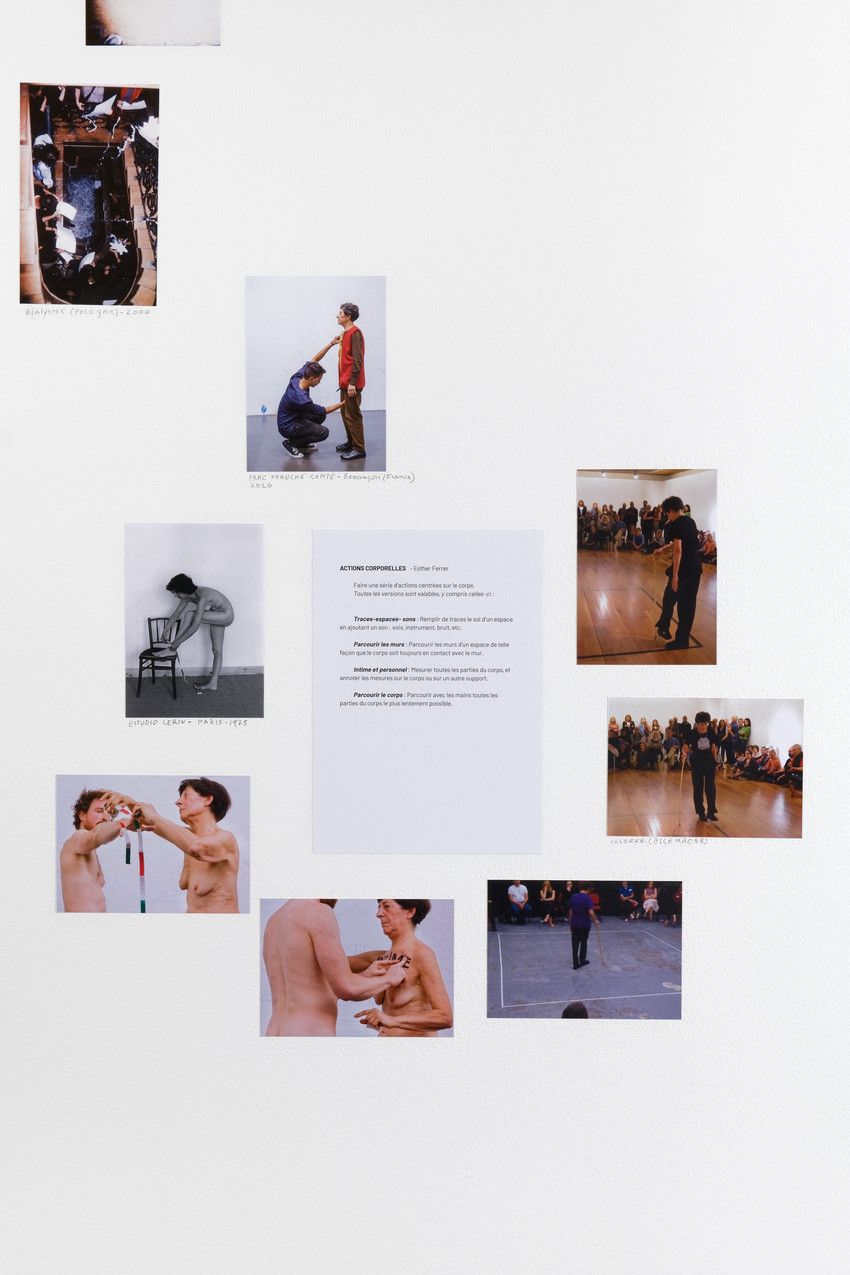
Score and performance photographs, exhibition view: “Esther Ferrer. one more minute (One more minute)”, Frac Franche-Comté, 2024. ©Blaise Adilon.
She connects them and draws geometric figures on tracing paper, which she then transfers or embroiders onto canvas. She notes, amused: “I don’t know why, but in France, no one is interested in this part of my work. Abroad, these paintings sell very well! ». These compositions, which contrast with the somewhat zany character we know, confuse his aficionados. But isn’t that the point?
« Esther Ferrer, one more minute (One more minute) / La Ribot, Attention, we’re dancing! »
Frac Franche-Comté, Cité des arts, 2, passage des Arts, 25000 Besançon
from April 28 to October 27
Esther Ferrer, Space projects: red module A, vers 1988

